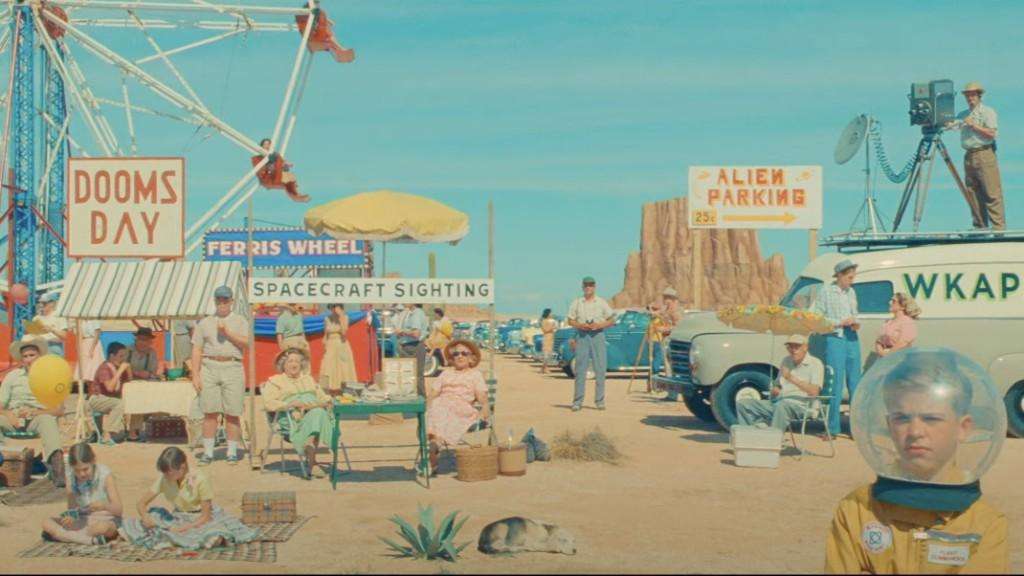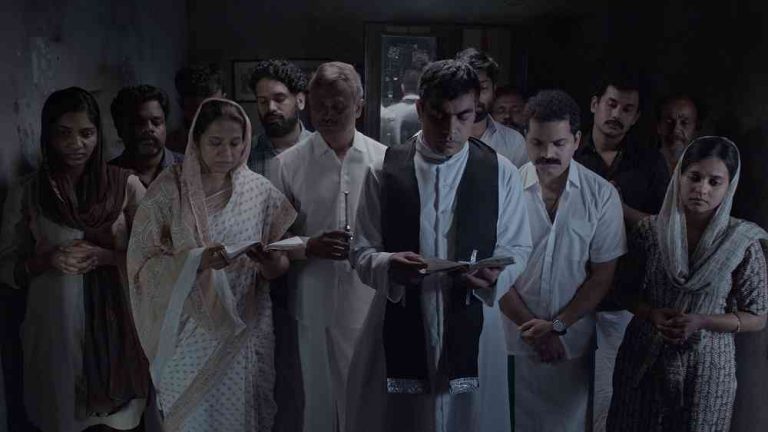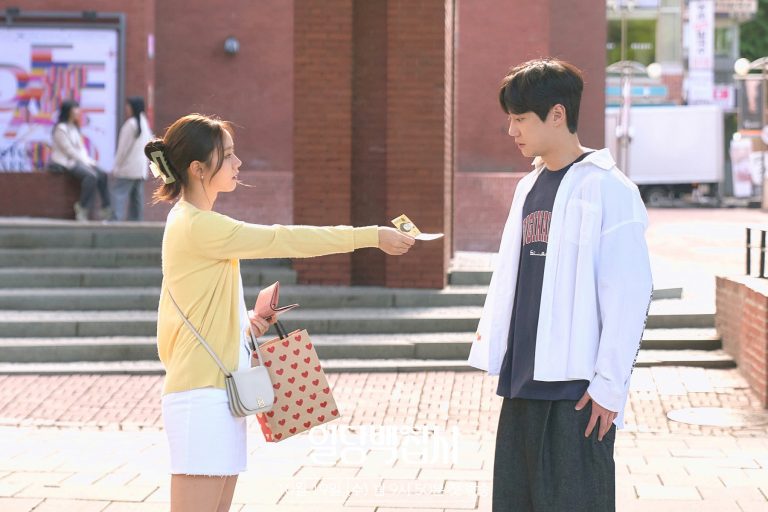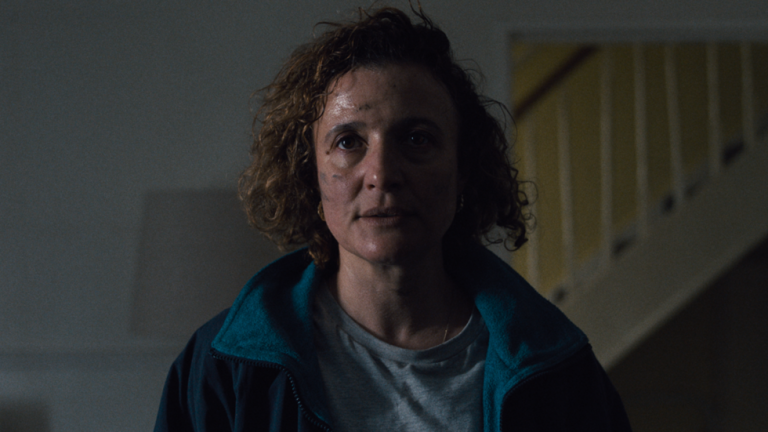‘Asteroid City’ (2023) and Wes Anderson’s Embrace of Mystery: Wes Anderson is one of the busiest filmmakers working today. The acclaimed writer-director is currently working on his twelfth feature film (“The Phoenician Scheme”), which will star Benicio del Toro, Michael Cera, and Bill Murray. He has also recently made four short films for Netflix, adapting Roald Dahl’s stories after his 2009 animated film Fantastic Mr. Fox. The director appears to be on something of a prolific streak at this latter stage of his career, having cemented and formulated his aesthetic style to a tee.
If the recent TikTok trend has made anything clear, it is that Anderson’s films are not easy to replicate. For every half-decent ripoff, there are dozens upon dozens of embarrassing approximations. The man himself seems to have it down at this point, though; his films have been aesthetically immaculate going back to Fantastic Mr. Fox, with nary an inch of wasted frame space. That begs the question: once you perfect your aesthetic sensibility, where do you focus your attention? If Asteroid City is anything to go by, it appears Anderson is contemplating that question himself.
His latest is a terrific reminder of the visual beauty his oeuvre is capable of; all in all, it offers us another dose of one of the most distinctive aesthetics ever put to screen. Style-cemented, Anderson brings reliable form to his newer pictures. Asteroid City, the name of the small desert town host to an ensemble of well-acted characters, is all soft pastels, straight lines, symmetrical compositions, and steady camera moves. It is all very assured and, at this point, a little predictable. In this film, you can practically predict when a shot will cut, what direction the camera will swing, and what cadence an actor will adopt. The ideas of the picture, however, are more profound.
In some way, Asteroid City responds to commentators complaining about the director retracing his creative steps. Indeed, it forwards some of the most abstract and thought-provoking ideas that Anderson has yet explored. Don’t get me wrong: emotional reticence (of the kind Steve Zissou/Royal Tenenbaum/Mr. Fox etc. displayed) is still a big part of the core themes of Asteroid City (Jason Schwartzman is terrific as emotionally constipated photographer Augie Steenbeck). What sets it apart here is that this film allows Anderson to interrogate his own obsessions–Asteroid City attempts to answer the question of why the director (and artists in general) so often return to the same ideas in their work.
Like Budapest and Dispatch before it, the film is just as structurally daring as it is visually immaculate. It starts as a television presentation of the production of a play called Asteroid City. As the presentation progresses, we are exposed to the behind-the-scenes of the production, as the playwright comes up with an idea for a script and tasks a team of performers with bringing it to life. In between all this is the meat: an actual production of all three acts of the play itself, which Anderson populates with a massive cast of actors playing actors playing characters (the ensemble is, as per usual, incredible).
The plot of the thing is really not anything to write home about. In the play, Augie Steenbeck tells his children about the death of their mother, he and his son Woodrow have affairs with actress Midge Campbell and her daughter Dinah (respectively), and the military temporarily locks down Asteroid City after an alien steals a fallen meteor from a nearby crater. Ultimately, the alien returns the meteor, and the army lifts the lockdown, allowing everyone to return home. Outside of the play, the playwright Conrad Earp enlists actors from the student body of a local acting school. The actor playing Augie Steenbeck (a man named Jones Hall, obviously also played by Schwartzmann) doubts his performance, and we ultimately learn that Earp dies in a car accident six months after opening night.
This elaborate setting leads to scenes where, for example, Jason Schwartzman plays an actor playing a non-actor attempting a dramatic reading of a screenplay. These structural jokes are fun, but the overall theme of the thing is what is worth writing home about. That theme is a mystery, the unknowable reality of the world, which confounds the characters, Anderson, and ultimately the viewer. At one point, Jones Hall (who we learn was in a relationship with playwright Earp) confesses that he has no idea whether he is playing his character correctly. Seeing as the TV production takes place after Earp’s death, it is clear that Hall is still in mourning. In one scene, he burns his hand out of depression, breaking the fourth wall of the production inside the film and surprising the actress playing Midge Campbell.
The confusion plaguing Hall is paralleled in the alien storyline, which is just as confounding. The extraterrestrial is a benign figure (played by Jeff Goldblum in one scene and what appears to be a claymation doll in another), lifting and returning the meteor before disappearing by the time the credits roll. In a similar vein to how Hall is confused by how he’s playing his character, Earp expresses confusion about what exactly his play is about. That confession culminates in Asteroid City’s most enigmatic sequence: a nearly musical scene where the school of actors chants the words, “You can’t wake up if you don’t fall asleep.” Asteroid City never explains what this means, allowing the mystery of it and other scenes to remain.
Anderson has spoken in the press about being “drawn to mystery.” He has said that he’d prefer that the movie support multiple interpretations and has refrained from concretely explaining his intentions for the picture. One thing is certain, however: Asteroid City is concerned with embracing the artistic process, allowing it to pelt you with ideas and provoke your gray matter. In the scene where Hall mentions that he has reservations about how he is playing Augie, the director, Schubert Green, tells him to keep going. In other words: being confused is the right way to play the grieving Augie, who is unsure of how he can move on from his wife’s death.
It becomes clear that Asteroid City is more about uncertainty and how that ties into the artistic process than it is about a Western town confronted with an alien encounter. With this film, Anderson answers the question of why he retreads the same ground: he admits to not being able to provide concrete answers and offers the idea that continuously circling the same ideas can allow us to reach new conclusions, none of which we can ever be sure is the right way to think about love, grief, family, or any of the other thematic stomping grounds the director returns to time after time.
Asteroid City is aware of the futility of attempting to understand the universe through artistic or scientific pursuits. It revels in it, knowing that some questions can never be definitively answered. You can’t even begin to unravel the world’s mysteries if you don’t first acknowledge the mystery of it and fall asleep to dreams so you can eventually wake up. The film concerns itself with the unresolved: stalled cars, towns, lives, and entire worlds seeking meaning, with the humility of knowing that meaning is forever elusive.






![Under The Shadow [2016] – JIO MAMI Mumbai Film Festival Review](https://79468c92.delivery.rocketcdn.me/wp-content/uploads/2016/11/Underthe2-768x282.jpg)

